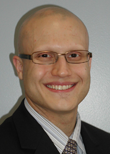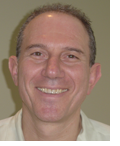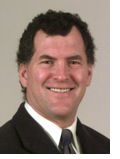A member service that keeps you up-to-date on important new literature relevant to your practice.

|
|
In this issue of JCDA Express our contributors highlight articles on impacted or retained second molars; salivary cortisol levels and caries; caries and prosthodontic patients; and the effect of mouthguards on athletic performance.
JCDA would like to gratefully acknowledge the publishers of 3 of these articles, who have granted free access to the full-text papers until June 16, 2011. The abstract for the final article is also freely available. Follow the links in the Notes and News sidebar to discover more about these publications.
Please mark August 4-6 in your calendars and make plans to attend the 2011 CDA Convention in Halifax. For an exclusive preview of the CE sessions, condensed presentations from several convention speakers are currently posted on my Editor's Blog.
Follow jcda.ca on Twitter (@JCDATweets) to keep informed when new clinical and scientific material is posted to the site. Please tweet or send me an email with topics you would like to see covered in future editions of JCDA Express.
Yours sincerely,
Dr. John P. O'Keefe
Editor-in-chief
jokeefe@cda-adc.ca
|
|
|



|
|
|
Impacted or Retained Second Molars

Dr. James Noble is staff orthodontist at Holland Bloorview Kids Rehabilitation Hospital in Toronto; he also maintains a private orthodontic practice in Toronto. Dr. Noble recommends:
Magnusson C, Kjellberg H. Impaction and retention of second molars: diagnosis, treatment and outcome. Angle Orthod. 2009;79(3):422-7.
Full-text access to this article has expired.
JCDA Clinical Pearl:
-
Extraction of the second molar, to be replaced by the third molar, was the most commonly prescribed—yet least successful—treatment.
Key points:
-
This article presents findings of a retrospective, longitudinal follow-up study of 87 patients with 135 impacted or retained second molars. The authors investigated the type of treatment rendered on these second molars and the outcome following treatment.
-
The study had clearly defined parameters for the success or failure of each treatment procedure.
-
91% of impacted second molars were treated by clinicians versus 41% of the retained second molars.
-
20% of second molars were left untreated and 44% of these erupted into good occlusion.
-
Only 42% of the treated second molars achieved successful results.
-
Surgical exposure of the second molar was the most successful treatment procedure (71% of cases).
-
If the wisdom tooth was extracted, the second molar successfully erupted in 42% of cases.
-
The most commonly prescribed treatment was extraction of the second molar (25% of cases) followed by replacement by the third molar. However, this treatment was only successful in 11% of cases.
Reasons for recommending this article:
Ectopic or impacted second molars are a common problem encountered in clinical practice, but the literature is deficient in studies that assess the outcome of different treatment strategies. Clinicians may believe that extraction of a retained or impacted second molar will result in the third molar erupting into its place. This was the most common treatment performed by clinicians in this study, but it had the least successful outcome. The few third molars that did erupt were all malpositioned (e.g., tipped in a cross or scissors bite or not fully erupted) and were at risk for elongation of the antagonist because of a delayed eruption of the third molar.
According to the study findings, extraction of the third molar and luxation or surgical uprighting or orthodontic exposure of the second molar appears to be a prudent treatment plan for retained or impacted second molars. Furthermore, over 50% of the second molars erupted spontaneously without any treatment. Therefore delaying treatment until it is clear that the second molar is indeed ectopic or impacted, and giving it a chance to erupt into position, is also recommended.
|
|

|
|
|
Salivary Cortisol Levels and Caries

Dr. Clive Schneider-Friedman is an assistant clinical professor in the division of orthodontics and pediatric dentistry at the Schulich School of Medicine and Dentistry, University of Western Ontario. Dr. Schneider-Friedman, a member of CDA's Committee on Clinical and Scientific Affairs, recommends:
Boyce WT, Den Besten PK, Stamperdahl J, Zhan L, Jiang Y, Adler NE, et al. Social inequalities in childhood dental caries: the convergent roles of stress, bacteria and disadvantage. Soc Sci Med. 2010;71(9):1644-52.
Full-text access to this article has expired.
JCDA Clinical Pearl:
-
High salivary cortisol levels, brought on by chronic stress, can have a significant effect on childhood caries.
Key points:
-
This article presents a broad review of the literature related to the causal pathways of socioeconomic status (SES) and childhood caries.
-
This is one of the few articles to examine the relationship of salivary cortisol levels (an indicator of chronic stress), bacterial counts and decay.
-
Children from lower SES families acquire higher levels of Streptococcus mutans and Lactobacillus than children from high SES families.
-
High levels of salivary cortisol secretion may compromise dental health by undermining protective local defences as well as affecting anatomical structures.
-
Children with a combination of low SES and high cortisol counts have higher decay rates and less enamel thickness and density, as evaluated on exfoliated primary teeth.
-
Children with the greatest enamel thickness also had low cortisol reactivity levels.
Reasons for recommending this article:
Despite evidence for multiple causative pathways for caries acquisition in children from low SES, many practitioners still believe that higher decay rates in this population are primarily related to a lack of attention to hygiene and diet. This article presents evidence that chronic stress, often experienced by these children, may in fact have more of an impact on childhood caries than previously thought. Having a broader understanding of some the potential mechanisms involved in the pathogenesis of caries may prompt practitioners to alter their risk management strategies with this population group.
|
|
 |
|
|
Caries and Prosthodontic Patients

Dr. Dorothy McComb is professor and head of restorative dentistry at the University of Toronto faculty of dentistry. Dr. McComb recommends:
Featherstone JD, Singh S, Curtis DA. Caries risk assessment and management for the prosthodontic patient. J Prosthodont. 2011;20(1):2-9.
Full-text access to this article has expired.
JCDA Clinical Pearl:
-
This article outlines current, effective caries reduction advice and strategies to maximize the longevity of restorative and prosthodontic treatments.
Key points:
- Replacement restorations currently represent a greater proportion of practising dentists' workload than the provision of initial treatments.
-
Caries is the main reason cited for restorative and prosthodontic failures in the majority of clinical studies.
-
Treatment failures can generally be attributed to one or more of the following factors:
-
dentist factors (e.g., the quality of care)
-
patient factors (e.g., ongoing risk of disease)
-
material factors (e.g., inherent properties and chemistry)
-
Prosthodontic treatment is frequently provided for patients who are at a high risk for caries. This is especially true where tooth loss can be attributed to caries (directly or indirectly) rather than periodontal disease.
-
Many types of prosthodontic treatments can actually produce more caries-susceptible locations due to the presence of prostheses. Such locations include the margins of crowns and fixed bridges or contacting areas on abutment teeth, used for the retentive and supportive elements of removable partial dentures.
-
There is significant evidence to suggest that prior caries experience (as measured by DMF) is a fairly accurate predictor of future caries risk. To ensure prosthodontic success, dentists need to reduce their patients' risk of caries by recommending a preventive treatment plan and discussing changes in patient behaviour.
Reasons for recommending this article:
This article is a good reminder for dentists to assess a patient's risk for future disease, investigate the etiology of the conditions being treated, and—when appropriate—provide patient-specific preventive education and treatment. If this is not an integral part of treatment planning and patient management, prosthodontic treatments are likely to fail due to recurrent disease—even if a dentist provides the highest technical standard of care.
|
|
 |
|
|
Mouthguards and Athletic Performance

Dr. Archie Morrison
is an associate professor in the department of oral and maxillofacial surgery at Dalhousie University's faculty of dentistry. Dr. Morrison recommends:
Arent SM, McKenna J, Golem DL. Effects of a neuromuscular dentistry-designed mouthguard on muscular endurance and anaerobic power. Comparative Exercise Physiology. 2010;7(2):73–9.
Full-text access to this article has expired.
JCDA Clinical Pearl:
-
This article examines if athletic performance can be enhanced with the use of certain types of mouthguards.
Key points:
-
This study compares the effects of the Pure Power Mouthguard and traditional custom-fitted mouthguards on athletic performance.
-
The authors assessed various athletic endeavours (e.g., vertical jump, bench press, anaerobic performance) in 22 male university athletes in a blinded, randomized cross-over study.
-
The study results show statistically significant differences in some tests but no performance difference in others.
-
One limitation of the study was that no absolute control was used, where subjects would have been measured with no mouthguard use at all.
-
Further, the authors used mean pooled data where the standard deviation was larger than the measured differences.
Reasons for recommending this article:
The manufacturer of the Pure Power Mouthguard claims that the results of this study prove that vertical jump and anaerobic performance of athletes is better with the use of its mouthguard. However, the limitations of the study demonstrate the need for further research before such conclusions on enhanced athletic performance can be made.
NOTE: funding for the study was provided by Pure Power Athletics, Inc., the manufacturer of the Pure Power Mouthguard. This article is not indexed in PubMed.
|
|


|
|
|
|
|
|

JCDA is the authoritative written voice of the Canadian Dental Association, providing dialogue between the national association and the dental community. It is dedicated to publishing worthy scientific and clinical articles and informing dentists of issues significant to the profession.

|

|

|

|
NOTES AND NEWS
Check out the publications featured in this issue
The Angle Orthodontist
(publisher: Allen Press, Inc.)
Social Science & Medicine
(publisher: Elsevier)
Journal of Prosthodontics
(publisher: Wiley-Blackwell)
Comparative Exercise Physiology
(publisher: Cambridge Journals)
|
FDI Annual World Dental Congress: New Horizons in Oral Health Care
September 14-17 in Mexico City, Mexico
Register for the 99th edition of the FDI Annual World Dental Congress. Early registrants can take advantage of lower registration fees and a wider choice of hotels. Visit www.fdi2011.org
|
OSAP 2011 Infection Prevention & Safety Symposium: Bridging the Gap to a Safer Oral Healthcare Environment.
June 9-12 in Plano (Dallas), Texas
The Organization for Safety and Asepsis Procedures (OSAP) is hosting a symposium on infection prevention and patient and provider safety. Twenty hours of continuing education credits are available during the course of the event.
Visit www.osap.org
|
CDHA National Conference: Advancing Dental Hygiene Practice
June 9-11 in Halifax, Nova Scotia
The 2011 Canadian Dental Hygiene Association National Conference will be held at the Lord Nelson Hotel in Halifax. Visit www.cdha.ca and follow the conference links.
|
Search the JCDA Classified Ads
Looking for employment? Want to sell your practice? Classified ads offer the most effective way to reach all dentists and students in Canada.
|
Spread the word
Help spread the word about JCDA Express by telling your colleagues about it and reminding them to send CDA their email address.
reception@cda-adc.ca
|

|

|

|
|



